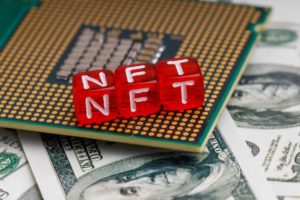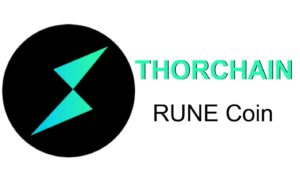Monero (XMR): What is it? Is it a good investment?

Monero (XMR), though a more recent cryptocurrency compared to Bitcoin, is famous primarily because it places special emphasis on privacy, data protection, and user anonymity. Technically, this crypto works like Bitcoin – both cryptocurrencies are based on blockchain technology.
However, Monero has additional security technologies to encrypt your data and protect it from outsiders. Crypto experts believe that the privacy feature of XMR is a major indication that the coin is worth investing in.
You’ll get to know more about Monero in the following – and you’ll be able to decide whether or not you are investing in it.
What is Monero?
Monero (XMR) is a cryptocurrency that was designed in 2014. This cryptocurrency differs from other well-known cryptocurrencies in some aspects, which includes:
- Increased anonymity and privacy protection for transactions
- Sparse algorithm for a low computation extraction process
- Equality of the user community
- Avoid the formation of oligopolies
Monero aims to differentiate itself from other digital currencies through protected privacy and increased user anonymity. The Monero blockchain, where users’ data is stored, is less transparent than other digital currencies.
Therefore, personal transaction data is not visible to third parties and can only be disclosed with permission.
How does Monero work?
Technically, Monero is similar to the way known cryptocurrencies like Bitcoin or Ethereum work. It is a cryptocurrency based on blockchain technology.
A blockchain is a database where all user transactions are stored in blocks. Blockchains allow payment processes to be independent and without the influence of financial institutions or banks.
The blockchain is decentralized and stored on the computers of all users who trade directly with Monero.
Monero blockchain is characterized in particular by a high level of anonymity, as it does not disclose transaction data. Therefore, it is not as transparent as the blockchains of other cryptocurrencies.
User transaction data is stored in chunks on the blockchain and elaborately encrypted. To encrypt a block, users or their computers must solve a very complex computation problem.
As a reward for a solved task, the user receives coins. This process is called prospecting or mining. This is why users are also called miners. The extraction takes place via an algorithm.
The RandomX algorithm is behind the Monero blockchain. It is responsible for data encryption. RandomX is cheaper and requires less computing power than, for example, Bitcoin’s SHA algorithm. This makes it easier to mine new Monero coins.
Why is Monero (XMR) so anonymous?
To ensure anonymity and privacy in transactions, Monero relies on various security measures. I will explain what measures and technologies these are below:
Encrypted transactions
First of all, the Monero blockchain is very well protected and not very transparent. The transactions and the data stored on it cannot be viewed from the outside and do not provide any information about the sender, the recipient, and the sum of the transaction. This personal data is encrypted and protected on the blockchain and it guarantees anonymity.
Only the sender and recipient of the transaction have a private key. The feature “display key” may, however, be assigned to third parties. It authorizes third parties to view the transaction at their respective address. Monero is therefore considered private, but optionally transparent.
Ring transactions
To ensure anonymous transactions and protected user privacy, Monero also relies on the concept of a ring signature. Here, the currency is not directly transferred from the sender to the recipient as with other cryptocurrencies but takes less easily traceable routes.
Transactions cannot be traced to users.
With ring signatures, different users are grouped for transactions without them knowing or actively involved. The group is only used to perform a transaction through its participants.
The goal is that the transaction, in the end, can no longer be traced back to a single person, but only to the group. Therefore, outsiders cannot tell which group member’s account the transaction belongs to. The user is therefore completely anonymous in the payment processes.
As an extended feature of the ring signature, Monero introduced the concept of Ring-CT. Ring-CT stands for “Ring Confidential Transactions”. Here, the amount of a transaction is also hidden.
Where can I buy Monero(XMR)?
In general, there are several ways to buy Monero. It is recommended that you create a Monero wallet first. A wallet can be compared to a digital wallet.
You can use Monero through it, as it stores all the information you need to receive and send Monero. There are many wallets for different platforms that can be easily downloaded.
The easiest way to buy Monero is through a crypto exchange like Binance.
You can get XMR coins with mining, i.e. solving arithmetic problems. However, the easiest way to get Monero is through exchanges like Kraken and Binance.
You can also trade Monero via CFDs (Contracts for Difference), where you only speculate on the price trend of the cryptocurrency. For example, the eToro crypto exchange offers Monero trading via CDs.
Those in possession of Monero coins can exchange them for services and goods. Some merchants accept payments with Monero.
Monero contract address
Find below the contract address.
Secret: secret19ungtd2c7srftqdwgq0dspwvrw63dhu79qxv88
Monero(XMR) current state of the market
Currently, a Monero is worth $189.43 on CoinMarketCap as of the time of writing. However, this value fluctuates from minute to minute and is certainly already at a different value right now.
Pros and Cons of Monero(XMR)
Before a conclusion on whether the coin is worth buying, it’s necessary to weigh the pros and cons of the crypto:
Pros
- Monero has a long history behind it.
- It has a professional development team.
- It has a solid and updated Blockchain structure.
- Monero has a high transaction speed.
Cons
- General risk on market volatility.
- Presence of high-performance cryptographic tools, belonging to the latest generation.
Is Monero (XMR) a good investment?
XMR cryptocurrency has established itself well over the years and has made a name for itself in the cryptocurrency scene. Thus, the Monero platform has gained good user activity. Monero’s growing user activity could be a green light to invest in it.
There are also other several points in favor of a future increase in Monero’s value. For instance, the growing transparency of blockchains like Bitcoin could mean an opportunity for the growth of the alternative cryptocurrency Monero.
That’s because Monero somehow represents a counter-concept to this transparency. And obviously, over the course of digitization, many customers desire blockchains with little or no transparency.
Monero (XMR) price prediction
Also, the predictions by some major crypto experts give another green light to invest in XMR:
- Gov Capital and its analysts are quite optimistic about Monero(XMR) this year. They expect the token to be $350 by the end of the year.
- Trading Beast and its analysts believe that Monero(XMR) will reach $360 by the end of the year.
- Digital Coin Price believes that Monero(XMR) will continue with the growth trend and the token could reach and exceed $600 by 2028.
- Wallet Investor algorithm forecasts long-term growth for XMR to be $608 by 2027.
Conclusion
It appears that everything looks good about investing in Monero(XMR). However, recall that just like other cryptocurrencies, Monero(XMR) is volatile. So, don’t invest more than you can afford to forget.
Don't miss a thing. Follow us on Telegram and Follow us on WhatsApp. If you love videos then also Subscribe to our YouTube Channel. We are on Twitter as MakeMoneyDotNG.





